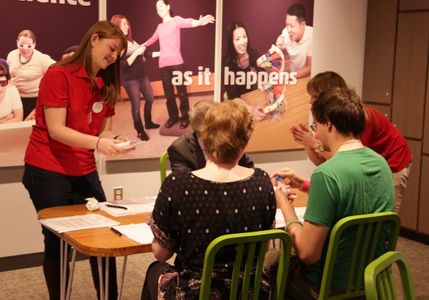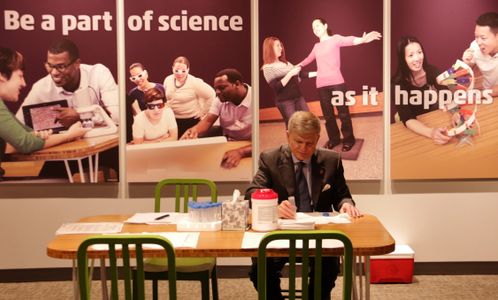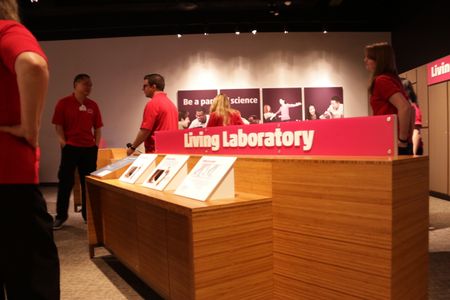What does your saliva say about your health? – Ask Dr. Bing Liu
Editor’s note: this story is part one of a two-part series. Part two will be published in the June 2, 2016, edition of Outlook This Week.

Since October, 2015, Boston University Henry M. Goldman School of Dental Medicine (GSDM) faculty member Dr. Bing Liu has been traveling to the Living Laboratory © section of the Museum of Science in Boston for three hours every Friday with a rotating three-person team of students from GSDM to get as many museum visitors as they can to donate saliva by spitting into a 50-milliliter test tube. The Living Laboratory is a section of the museum where museum visitors can learn about and participate in studies currently being conducted by local scientists.
Dr. Liu and the DMD and Advanced Standing (AS) DMD students are working on a project that is seeking to identify biomarkers in human saliva for three conditions: diabetes, heart problems, and high blood pressure. They need 2,000 five-milliliter samples from people aged 12-70 to begin analyzing the data. These samples can come from people with or without any of the conditions being studied.

Currently, saliva cannot diagnose as many diseases as blood. Researchers, like Dr. Liu, interested in improving salivary diagnostics are hoping to change this for a simple reason: salivary diagnostic tests are easier to perform than blood diagnostic tests and, therefore, more likely to be conducted by physicians and other healthcare providers, and requested by patients.
“For the past 20 years, salivary diagnostics have been at the forefront of dental research,” said Dr. Liu. “Researchers have been able to identify many biomarkers in saliva and use these biomarkers as an indicators to monitor or to diagnose systemic health.”

To collect the 2,000 five-milliliter samples, Dr. Liu and his team are participating in the Living Laboratory program at the Museum of Science. The museum has two of these “Living Laboratories” where scientists from universities and hospitals can interact with museum-goers and allow them to participate in their studies on an ongoing basis.
“I think the project is mutually beneficial to both GSDM and the Museum of Science,” said Dr. Liu. “By having researchers in the Living Laboratory, the Museum of Science will be able to educate the public with the resources that are available from the institutions in the Boston area.”

On Fridays, visitors to the Museum of Science can find the GSDM team stationed at the Living Laboratory providing museum-goers with an overview of the project and information about the importance of improving salivary diagnostics.
“I am delighted to see that GSDM continues to maintain this exciting and beneficial partnership with the Museum of Science’s Living Laboratory program,” said Dean Jeffrey W. Hutter. “Dr. Liu and our student volunteers should certainly be proud of the work they have done collective saliva samples and engaging with the public in this important research project.”

Read more about Dr. Liu and his project in part two, which will be published in the June 2, 2016, edition of Outlook This Week.